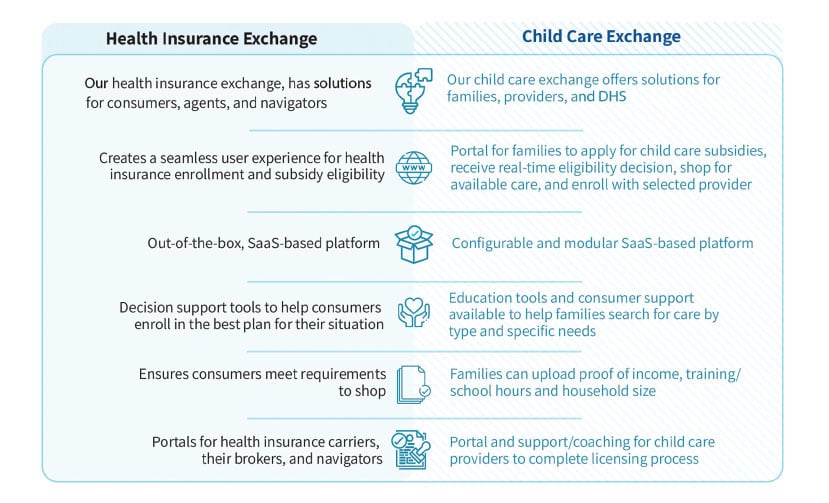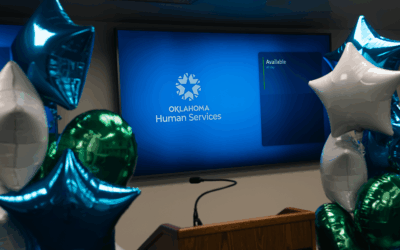There are numerous challenges facing the child care industry today. Many of these challenges—such as limited staffing, lengthy licensing process, convoluted administrative processes, and outdated technology solutions—are not new. Despite this reality, we continue to tackle the challenges with traditional approaches that do not meet the needs of the modern, evolving family, providers, or agencies. In the infamous words of Henry Ford, “If you always do what you’ve always done, you’ll always get what you’ve always got.” What if we take a step back and reimagine what it would look like to create a system that is accommodating to parents and children, supportive of providers, and takes lessons learned from other industries to create a truly innovative solution for our child care crisis?
To discover innovative solutions rather than repeatedly applying temporary fixes, state agencies could embrace the concept of cross-pollination, drawing inspiration and borrowing strategies from various industries and other successful service delivery programs. By integrating ideas, technologies, and practices from diverse sectors, agencies can create innovative solutions that transcend the limitations of a single-sector mindset. Great Ormond Street Hospital improved its patient hand-off process by borrowing techniques from the Ferrari Pit Crew and reduced errors from 30 percent to 10 percent. United Airlines restructured their boarding process1 by researching how ants handle bottlenecks and obstacles.
How can we apply the same cross-industry learning to child care? We can look at how health insurance exchanges, a cornerstone of the Affordable Care Act, leveraged technology to revolutionize the individual health insurance market. By providing an online platform for comparison shopping, these exchanges made it simpler for consumers to evaluate and purchase insurance plans, enhancing transparency and choice. The technology behind these exchanges enabled the standardization of plan offerings into metal tiers, facilitating easier comparisons and informed decision-making. Furthermore, technological innovations supported the implementation of income-based subsidies, making health insurance more accessible and affordable to a wider audience, allowing consumers to both shop for coverage and apply for subsidies in one place.
Further, exchange systems automatically attempt to verify eligibility data through federal and state sources, putting less onus on the consumer to submit various types of documentation. Through an efficient, user-friendly online interface, the exchanges not only improved the consumer experience but also encouraged competition among insurers, leading to greater innovation and service improvements in the health insurance industry. As far as proof that the exchanges are working—the uninsured rate across the country, in all age groups, has come down each year since their inception.

Applying the same solution principles from the health insurance industry can lead to significant improvements in service delivery, operational efficiency, and overall user experience in child care, creating space and capacity for more providers, and more families enrolled in care. A comprehensive child care exchange solution can address a broader spectrum of essential needs within early childhood education and care (see Figure above).
Families would be able to look for child care on a seamless, e-commerce-like platform that provides a simple user experience, instead of navigating multiple websites with different layouts and requirements. They would be able to effortlessly discover the financial assistance they qualify for and identify child care options that align with their unique needs. And, in an exchange environment, families wouldn’t be the only ones to benefit.
The licensing process for child care providers could be streamlined, encouraging their participation, and subsequently expanding the availability of child care services. Similar to how the health insurance exchanges improved the application and shopping process for individuals, a “child care exchange” solution could improve the overall licensing and ongoing support for providers through a state-of-the-art licensing process, ease of access, logical flows, document uploads, data verification services, bi-directional communication with families and licensing entity, and a resource support library—just to name a few of the potential benefits. On the agency side, redesigning business processes and how the work of administering child care gets done can augment the use of technology solutions that enhance the efficiency and capacity of caseworkers ensuring smoother operations and improved support for families.
Exploring diverse, and even borrowed solutions is key to driving substantial and enduring change, setting us on the path to creating a new, sustainable model that addresses the needs of families, providers, and agencies—now and into the future.
By drawing inspiration from successful sectors, such as the individual health insurance market, we can embrace a new mindset that might just be the transformative shift the industry requires.
1. https://www.afar.com/magazine/what-ants-have-taught-us-about-boarding-airplanes
[fusion_separator style_type=”single solid” hide_on_mobile=”small-visibility,medium-visibility,large-visibility” class=”” id=”” sep_color=”#606060″ top_margin=”25px” bottom_margin=”1px” border_size=”” icon=”” icon_circle=”” icon_circle_color=”” width=”45%” alignment=”left” /][fusion_text]
*Originally published as On the Outside Looking In: Reimagining Child Care Program and Policy Through a Cross-Pollination Lens (Policy & Practice, Spring 2024)








